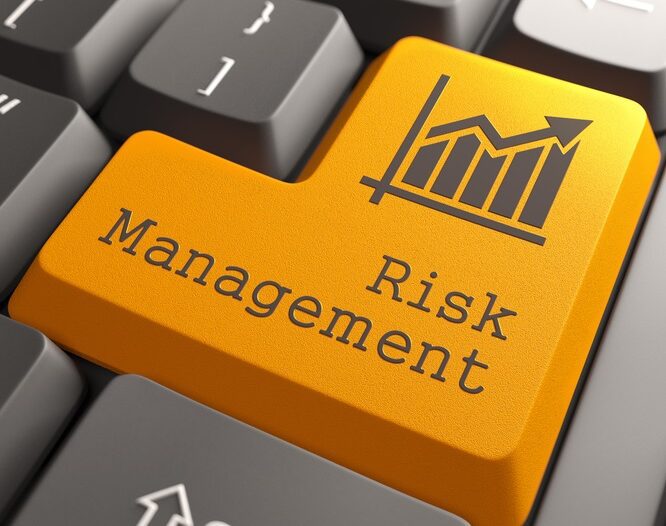I often buy into the role of market commentator and dish out what is expected, but today I’m going to aim for a bit of truthiness about what trading the markets is all about.
The first thing that needs to be understood is that you don’t get handed a crystal ball when you graduate from business school.
The future remains just as much a mystery as it is for everyone else.
It’s the questions we ask the market that shape the answers we receive. If you think the ‘answer’ is out there somewhere and all you have to do is work really hard to find it, you’ll probably end up chasing your tail.
We all have to make decisions based on imperfect data. Unless you are the CEO of the company you are interested in investing in, there will always be someone out there who knows a hell of a lot more about the company than you do.
So regardless of the fact that I devote all my time researching companies for members of my trading service to invest in, I still end up investing without knowing everything that I need to know.
I have to take a leap into the unknown and so do you if you want to make more money than a few percent a year.
Free Report: ‘Why Your Bank Dividends Could Be Under Threat’
The Importance of Risk Management
Understanding what risk is and how you should deal with it is the most important thing you can do as an investor.
I enjoy reading Hotcopper forums because they give you a great insight into the mind of most traders and investors. If the stock price is going up the comments become a frenzy of backslapping and ‘$1 parties’.
Every person on Hotcopper bought five million shares at 1-cent and is going to retire on the proceeds. Yeah, right.
It only takes a few weeks of the price going down for the forlorn comments to start popping up. If the stock price collapses the forum is deserted and the pumpers of the stock are nowhere to be seen.
Understanding risk is saying to yourself each and every day ‘I don’t know the future’ regardless of how much money you’ve made in the past six months or whether your last pick was a 10 bagger.
Understanding risk is knowing that when you are in a position you go slightly bonkers. Your urges will lead you into making the wrong decision at the wrong time.
If you are making heaps of money you won’t take some money off the table and will be tempted to buy more. When you are losing money, you will hold on even if you’ve lost more than you wanted to.
Risk isn’t a calculation based on the volatility of the stock. Risk is your personality.
The market couldn’t care less if you make a gazillion dollars or lose every cent you have punting on a tip from a mate at the pub.
It’s every decision you make before and during a trade that decides your fate. It’s not the stock’s fault for going down. It’s your fault for not managing your risk effectively.
If you begin your journey into trading with the thought ‘I know I don’t know the future’, it will lead to much better decisions than telling yourself you are smart enough to work out which company is going to succeed.
My own way of dealing with not knowing the future is to use technical analysis to help me get to a position where I am not risking my initial capital as quickly as possible.
Many people think technical analysis is similar to reading tea leaves. You put a lot of dashed lines on a chart and a few indicators at the bottom with squiggly lines and then you do a dance on one leg and hey, presto, you know what’s going to happen tomorrow.
Technical analysis isn’t about working out what the future holds. It is a risk management tool that gives you a sense of how other traders are positioned and where their stop-losses probably are.
You can use this information to help you plan trades so that you have a higher probability of reaching your initial target.
My own method involves using ‘mean reversion’ to help me become free carried in a position.
Whether prices are trending or rangebound, they spend a lot of time oscillating around a central point before deciding to shoot off in one direction or another. That’s what I mean when I say ‘mean reversion’.
I know that revisiting the centre of the wave or range that we are trading in is a high probability event so that is where I aim to take my first bit of profit.
I usually sell a third of my original position at this central point and then adjust my stop-loss to the price where I will be at breakeven on the whole trade.
That means I get a free look at what’s coming next. My stress disappears because I will either breakeven on the trade or make money.
That is what I call the ‘free option’. Because the payoff is now similar to a free call option.
The breakeven stop-loss is usually below a major level of support, which adds another level of protection. If prices break below that major support level I don’t want to be in the stock anyway.
I may have spent months following this stock and reading every bit of research released and announcement made. I may love what they do and feel confident that they have a bright future.
But I still trade it in the same way I trade everything else. I aim to take part profit as quickly as possible because I know I don’t know the future.
I have now planted a seed and can relax knowing that my initial capital is safe. My aim is to plant as many seeds in the market as possible knowing that many won’t work but others will and some spectacularly.
Members of Pivot Trader bought Redbubble Ltd [ASX:RBL] at 95 cents just after the crash. It is now trading at $4.00, four months after entering.
That’s a 320% return in four months!
Do you think I knew that was going to happen?
Nope. Didn’t have a clue.
We took a third profit at the initial target of $1.40, five weeks after entry. I then took another third profit at $3.15, three months after entry and remain long the final third of the position long term.
Even if Redbubble goes bankrupt from here we will still walk away from the trade with a 70% return on initial capital.
It has nothing to do with me being clever. I didn’t know their sales would go ballistic with everyone in lockdown, although I thought it may help.
All I knew was that a bunch of stop-losses had gone off during the crash and taken the price below it’s previous all-time low.
Prices had turned back up and created a weekly buy pivot and I knew that there was a good chance prices could reach $1.40 before going back below the low made in the crash.
That’s quite literally all I knew.
But by keeping it simple and accepting that I don’t know the future, we were able to ride a massive uptrend without risking our shirt.
That’s the power of effective risk management. You can gain exposure to high risk situations and you can do it in a disciplined way.
And that is why risk management is sexy.
Ryan Dinse is also a stickler for risk management because he likes to chase after big returns on small-cap stocks. You can check out what he’s up to by going here.
Regards,
 |
Murray Dawes,
For Money Morning
PS: Is Lithium Ready for a New Bull Run in 2020? Free report reveals three stocks that could make serious gains. Download your report now.

